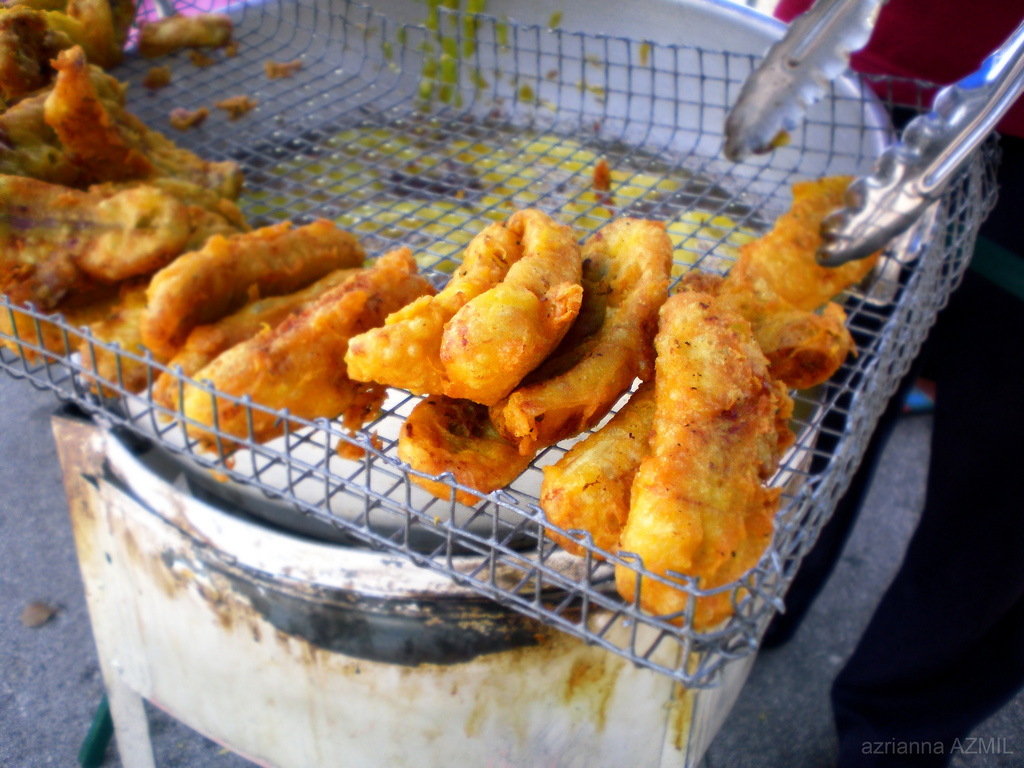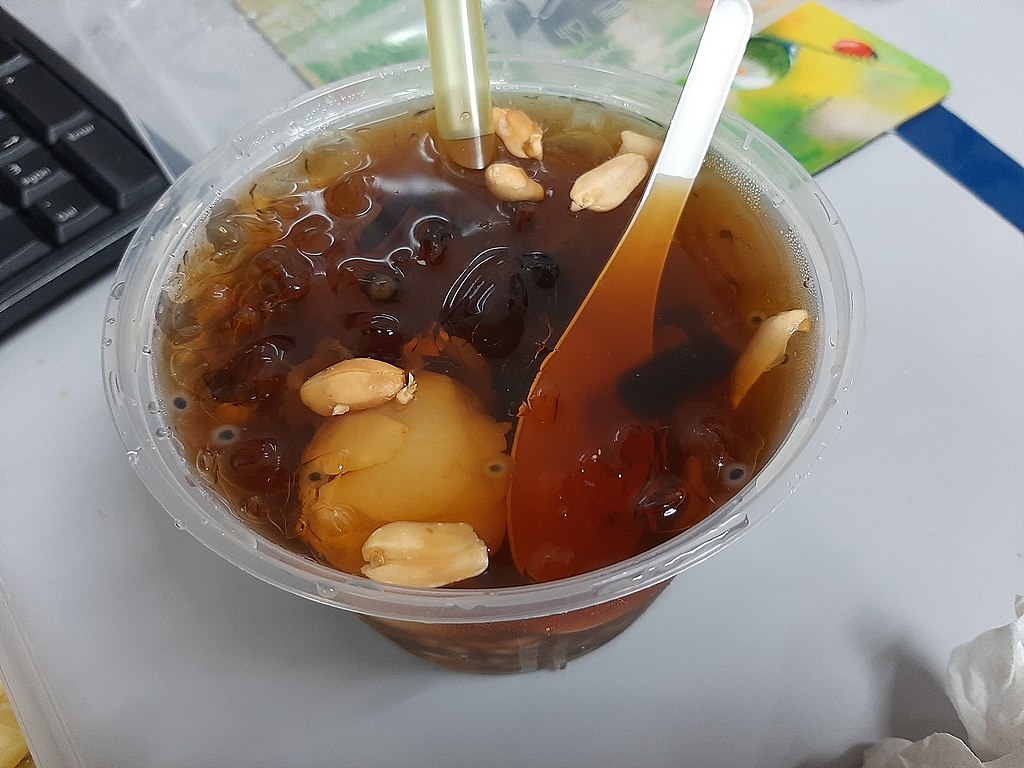Table of Contents
Toggle10 Must-Try Malaysian Desserts to Satisfy Your Sweet Tooth
Malaysians love sweets. That is why we have the highest rates of obesity and diabetes in Asia, unfortunately.
Okay, perhaps that’s not the best way to start an article about desserts, but it just goes to show how good the desserts must be, if the people are willing to sacrifice their health and waistlines for them. Best of all, these sweet treats are all very affordable, some going for as low as MYR 0.50 per piece.
Here are some of the best ones:
1. Ais Kacang

Probably the most popular dessert in Malaysia, ais kacang (literally meaning “ice beans”) is almost similar in concept to Korean bingsu or Filipino halo-halo.
Ais kacang is also commonly known as ABC (Air Batu Campur, meaning “mixed ice”), named as such because it contains a mixture of ingredients: evaporated milk, coconut palm sugar, peanuts, kidney beans, corn, and grass jelly (cincau), served over a mountain of shaved ice.
However, some vendors also throw in a scoop of ice cream on top, nata de coco cubes, or maybe also some fresh fruit slices.
It is the perfect antidote to Malaysia’s unforgiving heat.
You can find it in many restaurants selling local food. Sometimes it is also sold from foodtrucks or roadside stalls. But the telltale sign is always the traditional ice shaver machine displayed prominently in front of the shop. So, if you see one of those, go right in and ask for an ABC.
2. Cendol

In the same family as the ABC, cendol is also a mixture of different ingredients served over shaved ice. But unlike ABC, it uses coconut milk instead of evaporated milk. It comes with kidney beans and is sweetened with palm sugar.
And what are those green worms on top?
They are jelly noodles made from rice flour, and colored and flavored with a type of leaf called “pandan”. Suitable for vegans.
Where can you find them? Usually at the same places that sell ABC. Look out for those ice shaver machines.
The most famous cendol vendor is probably Penang Road Teochew Chendul, which has been around since 1936. It can still be found in its original location on Penang Road, Penang, but it has also expanded into a restaurant chain with outlets all over the country.
3. Apam Balik

Apam balik is a folded pancake with a filling of creamed corn and chopped peanuts. There are two versions to choose from: thin and crunchy or thick and fluffy. The thick and fluffy one can be a meal on its own, so you might want to save that for when you’re really hungry. Apam balik can often be found in traditional night markets all over the country and in Chinatown.
4. Pisang Goreng

If you’ve been to Jalan Alor Night Market, you probably have come across the stall that sells all sorts of fried fruits including fried pineapple, fried durian, fried banana, and fried jackfruit.
But out of them all, pisang goreng (fried banana) is the most typical Malaysian snack — usually served for afternoon tea. In almost every local township/residential area, you can find roadside stalls selling these fried goodies in the afternoon (around 2 – 6 pm).
Pisang goreng is made from fresh bananas coated in flour batter and deep-fried to a golden perfection. Some people like to dip it in spicy sauce, some like it with soy sauce. I prefer it plain, and paired with a steaming cup of Teh O panas kurang manis.
5. Ondeh-Ondeh

Ondeh-ondeh (a.k.a. buah melaka) is a traditional dessert that comes in the form of funny-looking furry balls that are usually green in color. They are made from either glutinous rice flour or sweet potatoes. The green color comes from pandan leaf and the white coating is desiccated shredded coconut.
Inside is melted palm sugar. So, don’t try to cut the ball with a knife or spear it with a fork. Just put the whole thing in your mouth and keep your mouth closed while you bite into it, otherwise the sugary juice will squirt all over the place.
6. Bubur Cha Cha

Bubur Cha Cha is a sago porridge served with chunks of sweet potato and taro, doused in coconut milk. Other optional ingredients may include black-eyed peas, yam, tapioca, barley, and banana. Yes, that’s a lot of stuff in one bowl!
Popular among the Nyonya/Peranakan community in Malacca, this dessert can also sometimes be found in night markets and bazaars in other parts of the country. It can be served hot or cold.
7. Leng Chee Kang

Leng Chee Kang (sweet lotus seed soup) is a Chinese dessert of boiled rock sugar broth containing longan fruits, lotus seeds, dried persimmons, lily bulbs, ginkgo nuts, barley, basil seeds, quail eggs, and malva nuts, which are a special type of shrivelled-looking pods that expand into jelly-like fibers when soaked.
You have probably noticed by now that we like to mix a lot of different ingredients in one bowl. Just like how we like to mix many different cultures in one country 😉
This dessert can be served hot or chilled with ice cubes, and is a favorite especially during the Chinese New Year.
8. Putu Mayam

Putu mayam is originally a South Indian dessert (iddiyappam, or string hoppers) but has been “Malaysianized” to suit the local taste.
It consists of handmade steamed rice noodles, made from a mixture of rice flour, water, pandan leaf for flavoring, and/or coconut milk. The noodles are then served with palm sugar and grated coconut.
The best ones are usually sold by Indian vendors cycling around residential areas on makeshift mobile food stalls.
9. Kuih Ketayap

Just like most of the other Malaysian desserts, kuih ketayap contains the three staple ingredients: palm sugar, grated coconut, and pandan leaf. Pandan is used to give flavor, color, and fragrance to the pancake-like wrap, while the grated coconut is mixed together with the palm sugar to make the filling. A very filling snack, it is commonly served for breakfast and afternoon tea.
10. Kuih Keria

Kuih keria is the Malaysian version of donuts. It is made from sweet potatoes, deep fried, and drizzled with sugar syrup. Some vendors might also use palm sugar syrup or honey as a substitute. If you love sweet potatoes, you should definitely give this dessert a try. It can often be found in local restaurants or roadside stalls selling breakfast. A delicious treat to counter the spiciness of your nasi lemak.
Have you tried any of these desserts? Which one did you like the most? Comment below.
You May Also Like: